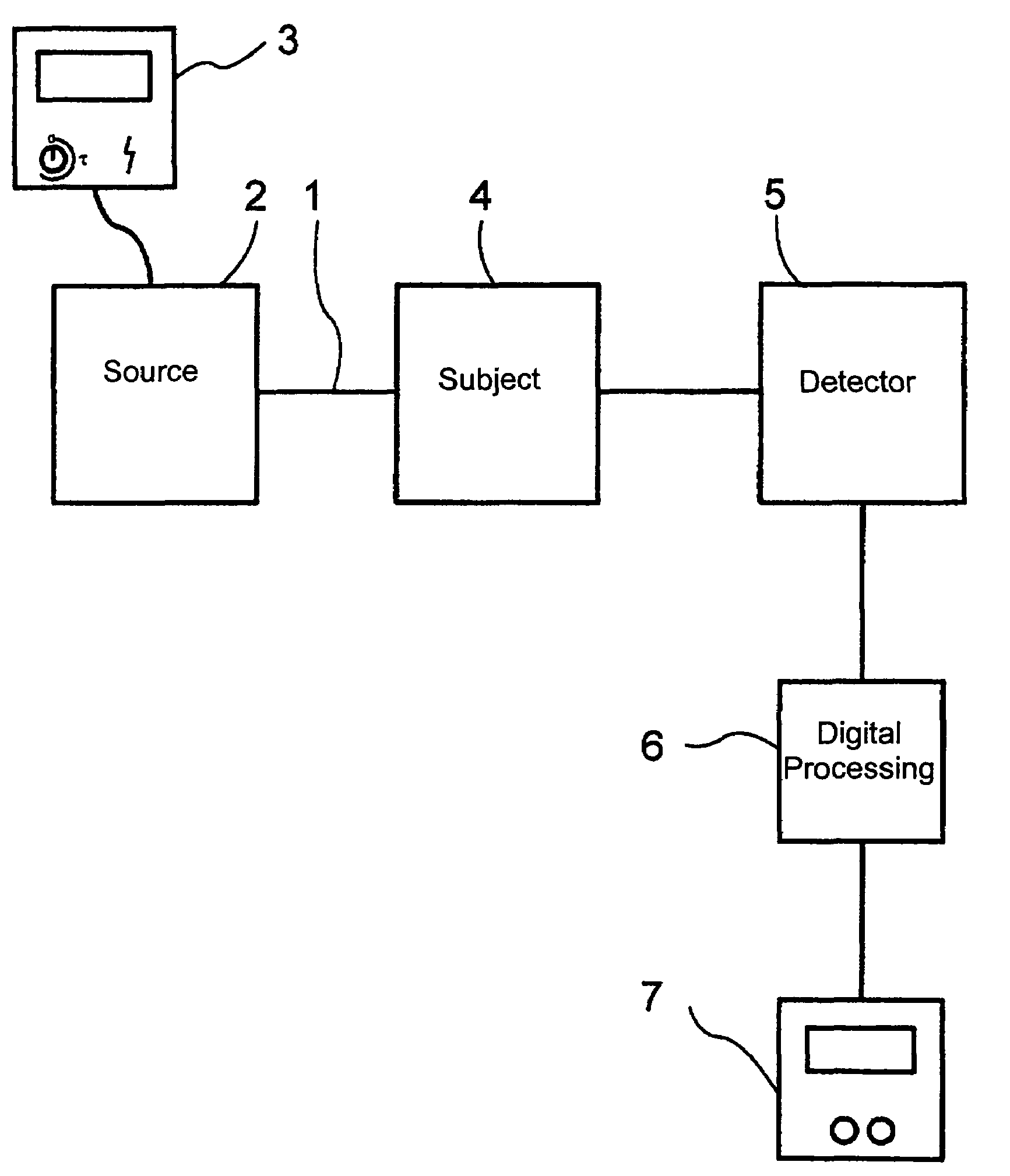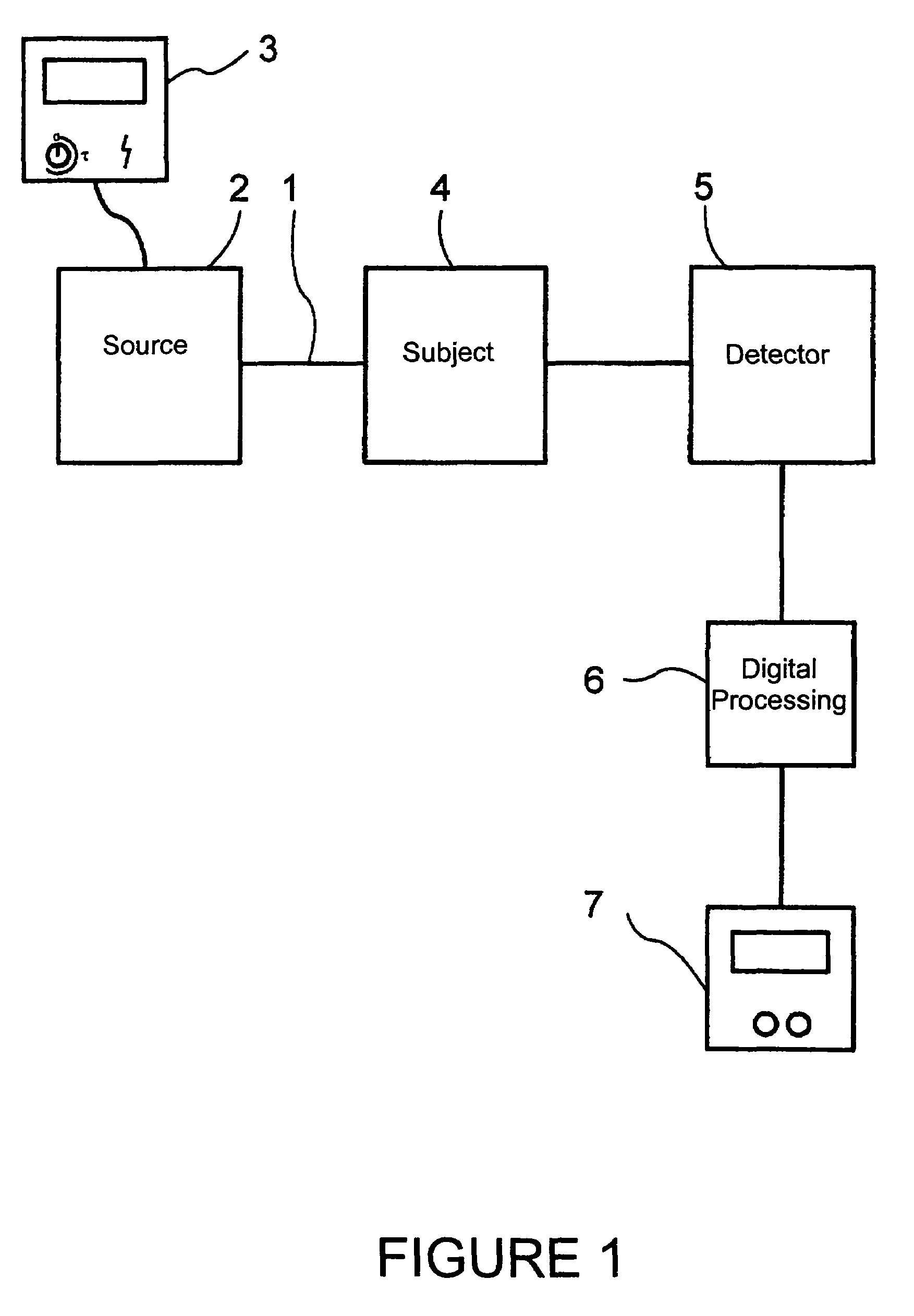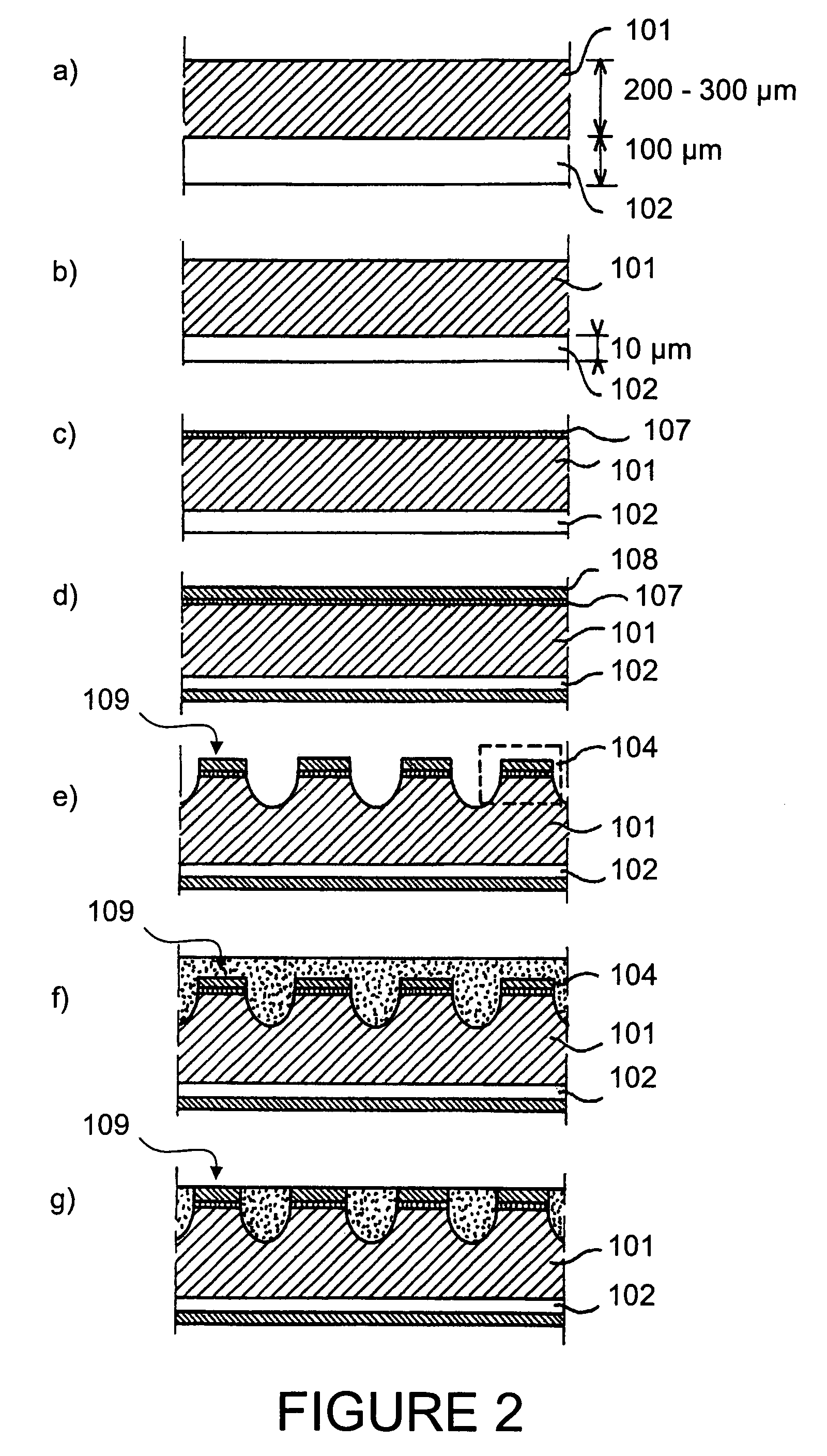Radiological imagery method and device
a radiological imaging and method technology, applied in the direction of x-ray apparatus, radiation intensity measurement, electrical apparatus, etc., can solve the problems of inability to achieve the effect of x-ray imaging in industrial level, slow image acquisition speed of detectors, and insufficient global output, so as to reduce notably the dose d of x-ray photons, the effect of simple design and operation mod
- Summary
- Abstract
- Description
- Claims
- Application Information
AI Technical Summary
Benefits of technology
Problems solved by technology
Method used
Image
Examples
Embodiment Construction
[0045]The instant signal S generated by a current detector under a flux F of X-ray photons is weak and of continuous type at a few ms-scale. This signal S is therefore difficult to extract from the background noise measured by the detector, itself continuous at this time scale. In order to obtain a response R of the detector which is significant and processable, the signal S should be integrated for an exposure time Te sufficient to imply that the patient receives, during the acquisition of this response R, the dose D=F×Te. The aim of the present invention is to replace the response R of the detector with a pulse signal. By measuring the instant signal Si for a short duration Ti before Te, with a flux of photons Fi, and in sensing said signal Si with an X-ray detector having very quick response time tr, the dose may then be reduced. Indeed, one switches thus from the dose D to a dose Di=Fi×Ti where Ti / Te is smaller than Fi / Fe so that Di is shorter than D. Fi may be greater than F bu...
PUM
 Login to View More
Login to View More Abstract
Description
Claims
Application Information
 Login to View More
Login to View More - R&D
- Intellectual Property
- Life Sciences
- Materials
- Tech Scout
- Unparalleled Data Quality
- Higher Quality Content
- 60% Fewer Hallucinations
Browse by: Latest US Patents, China's latest patents, Technical Efficacy Thesaurus, Application Domain, Technology Topic, Popular Technical Reports.
© 2025 PatSnap. All rights reserved.Legal|Privacy policy|Modern Slavery Act Transparency Statement|Sitemap|About US| Contact US: help@patsnap.com



